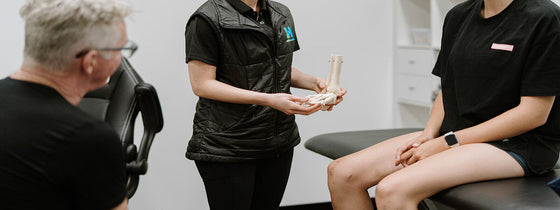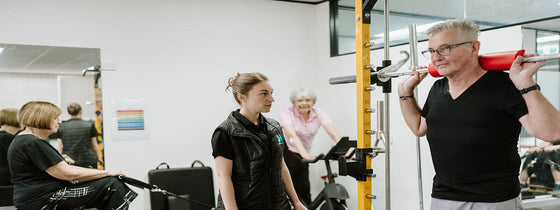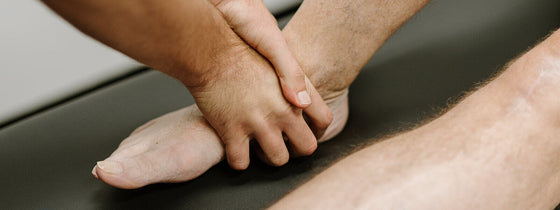June 26, 2019
One of the most common injuries in all sports are ankle sprains. In fact, 85% of all injuries are inversion ankle sprains. This usually happens when the ankle twists inwards while running, jumping or when stepping on another player's foot during a game, or race. This causes a strain to the lateral ligaments of the ankle around the base of the foot and is generally accompanied by global swelling and bruising.
Following this, it's common for patients to use basket-weave taping as a technique to initially bring down swelling and then utilising taping as a preventative measure for added support while returning to sport.
But, what's better? Why should/do we tape and brace ankles?
As mentioned, taping is used as a preventative measure to reduce the chance of recurring ankle sprains - however, it does not necessarily stop them from occurring altogether. Ankle taping is used to help stabilise the joint, limit motion and increase proprioceptive input (awareness in space) to improve ankle and foot control. Taping in the long term can become quite irritating on the skin due to the glue used. Additionally, it can become expensive and requires correct application to work effectively.
This is where bracing can be more useful. In the longer term, bracing can be an option during games and ensures that patients can easily apply their own preventative measure. They are shown to be an effective way of measuring the risk of ankle sprains in a reusable and efficient manner. It's important to remember, however, that prevention of sprains isn't guaranteed.
Both taping and bracing are great in the short term and, while they can absolutely help minimise injury, the best practice management for the prevention of ankle sprains is rehabilitation and a strength program using exercise-based therapy. Not performing, or a poor rehabilitation program (such as solely relying on bracing and taping) has the greatest cause of re-injury and increases the chance of re-occurrence.
Because of this, your best bet is to engage in a physiotherapist-led rehabilitation program to ensure correct technique, strength and control is obtained when performing an athlete's chosen sport. It should be specific to the patient, focus on strength, proprioception and a gradual return to running and 'change of direction' tasks to minimise the risk of re-injuring a player's ankle.


